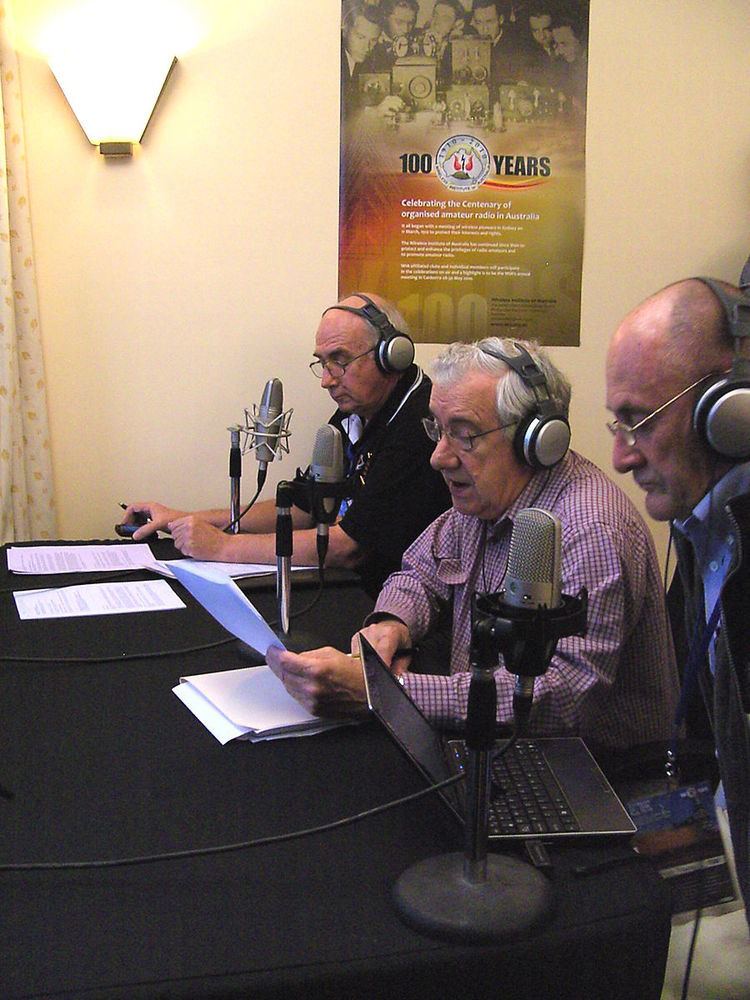Abbreviation WIA Type Non-profit Region served Australia | Formation 1910 Purpose Advocacy, Education | |
 | ||
Headquarters Bayswater, VictoriaQF22od | ||
The Wireless Institute of Australia (WIA) was formed in 1910, and is the first and oldest national amateur radio society in the world. 2010 is the 100th anniversary of its formation. It represents the amateur radio operators of Australia in dealings with the Australian Communications and Media Authority (ACMA), the authority under the government of Australia that administers communications within and external to Australia. The WIA publishes a monthly journal for its membership called Amateur Radio. The organisation is the national society representing Australia in the International Amateur Radio Union.
Contents
Governance
On 16 May 2004, the Annual General Meeting adopted a new constitution that established a national organisational structure (seven Directors with individual membership of persons in the national body) versus the former federal arrangement (membership held in state Divisions, and the Divisions having membership of the Federal body).
100th anniversary
The 100th anniversary of the WIA was commemorated in 2010. A special event callsign and station was established and used throughout 2010: callsign VK100WIA.
The Annual General Meeting was held in Canberra, Australian Capital Territory, over 28–30 May 2010, and included:
Controversy
There has been growing concern among the membership of the WIA of alleged "mismanagement and incompetence by the directors" primarily on social media. These issues have been linked to the lack of social media presence, mismanagement of finances, as well as a lack of connection between the actions of the organisation and the actions of local Amateur radio clubs. There has also been a "WIA Reform Group" established to try and enact change within the organisation by ex-directors other senior role holders in the organisation. Current directors have also held talks around the country identifying issues they see in the organisation and possible solutions.
Training and licensing
The WIA conducts training sessions and has training materials for people wishing to become licensed Amateur Radio operators, conducts the testing using a system of accredited testers, and issues the authorisations for the ACMA to issue licences.
Emergency communication
The Wireless Institute Civil Emergency Network (WICEN) (pronounced 'Wy-sen') trains and rehearses amateur radio operators in amateur radio emergency communications for call-out in civil emergencies. It is organised by state and region, with autonomous bodies in each state linked to that jurisdiction's disaster plan. In most states, WICEN is organised by a committee of the WIA state organisation, but in New South Wales and Victoria, WICEN is separately incorporated. WICEN has been activated for various emergencies, notably in recent years the Black Saturday bushfires on 7 February 2009 in Victoria.
Contests
The WIA sponsors or conducts various Australian and Australasian radio contests.
Remembrance Day (RD) Contest
Amateur radio operators in Australia participate in the Remembrance Day Contest on the weekend nearest Victory in the Pacific Day, 15 August. The competition commemorates amateur radio operators who died during World War II and encourages friendly participation to help improve the operating skills of participants. The contest runs for 24 hours, from 0300 UTC on the Saturday (formerly 0800), preceded by a broadcast including a speech by a dignitary or notable Australian (such as the Prime Minister of Australia, Governor-General of Australia, or a military leader) and the reading of the names of amateur radio operators who are known to have died. It is organised by the WIA, with operators in each Australian state contacting operators in other states, New Zealand, and Papua New Guinea. A trophy is awarded to the state that can boast the greatest rate of participation, based on a formula including: number of operators, number of contacts made, and radio frequency bands used.
